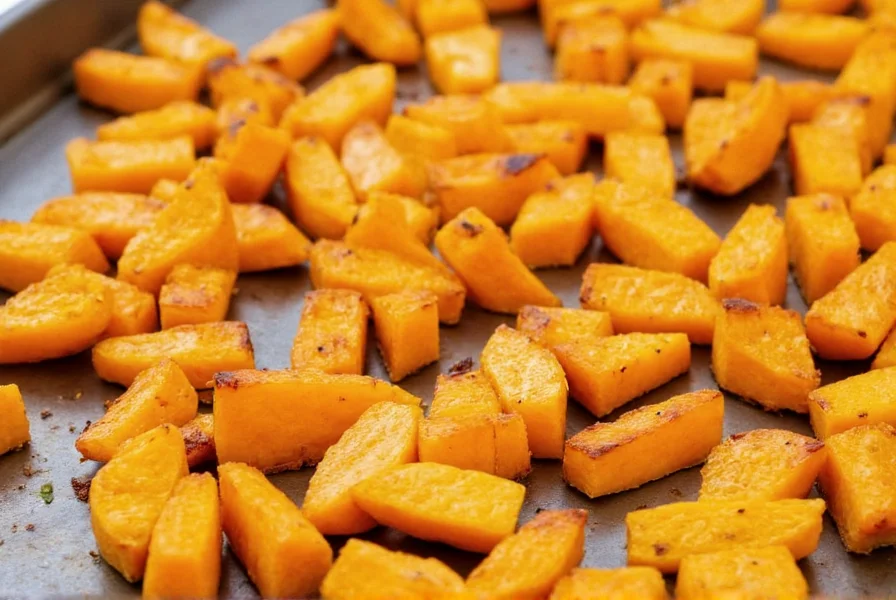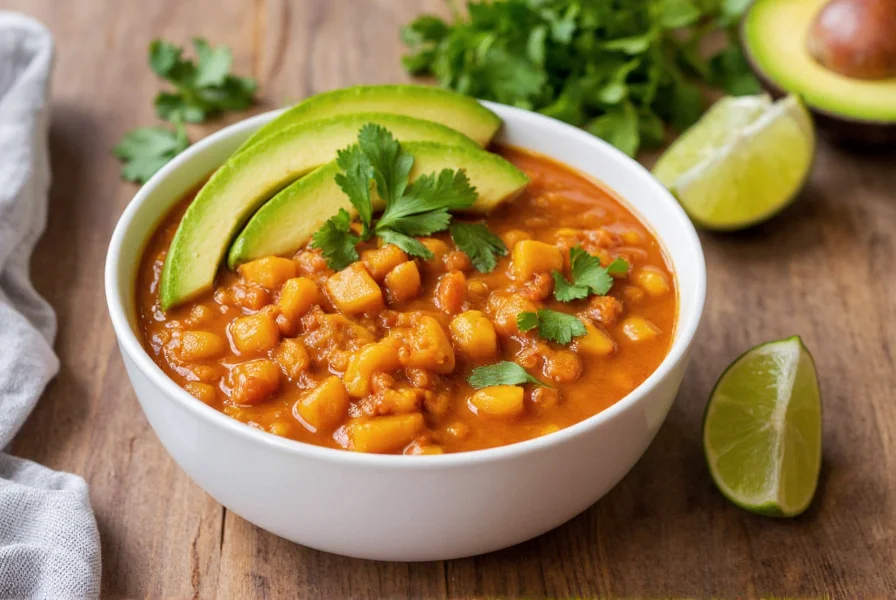Butternut squash chili has emerged as a beloved variation of traditional chili, offering a perfect balance of sweet and savory flavors with substantial nutritional benefits. Unlike conventional chili recipes that rely heavily on meat, this version showcases butternut squash as the star ingredient, creating a dish that's naturally creamy, rich in vitamins, and adaptable to various dietary preferences.
The Culinary Science Behind Butternut Squazz Chili
Understanding why butternut squash works so well in chili requires examining its unique properties. Butternut squash contains natural sugars that caramelize beautifully when roasted, developing complex flavor compounds that interact perfectly with chili spices like cumin, smoked paprika, and chipotle. The squash's high pectin content contributes to the chili's thick, luxurious texture without needing dairy or additional thickeners.
Professional chefs often recommend roasting the squash before adding it to chili rather than boiling it. This technique concentrates flavors and creates those desirable caramelized edges that add depth to the final dish. The Maillard reaction that occurs during roasting develops hundreds of flavor compounds that simply can't be achieved through boiling.
Essential Ingredients for Perfect Butternut Squash Chili
Creating an exceptional butternut squash chili requires careful selection of ingredients. Here's what you'll need for a balanced recipe serving 6-8 people:
| Ingredient | Quantity | Special Preparation Notes |
|---|---|---|
| Butternut squash | 2 lbs (about 1 medium) | Peeled, seeded, and cut into 1/2-inch cubes |
| Black beans | 2 cans (15 oz each) | Rinsed and drained |
| Fire-roasted tomatoes | 1 can (28 oz) | With juices |
| Onion | 1 large | Diced |
| Garlic | 4 cloves | Minced |
| Vegetable broth | 4 cups | Low sodium |
| Olive oil | 2 tablespoons | For roasting squash |
Step-by-Step Preparation Guide
Follow these professional techniques for the best butternut squash chili experience:
- Roast the squash: Preheat oven to 400°F (200°C). Toss cubed squash with olive oil, salt, and pepper. Spread on a parchment-lined baking sheet and roast for 25-30 minutes until tender and caramelized at the edges.
- Sauté aromatics: In a large pot or Dutch oven, heat 1 tablespoon of oil over medium heat. Add onions and cook until translucent (about 5 minutes). Add garlic and cook for 1 minute until fragrant.
- Bloom spices: Stir in 2 tablespoons chili powder, 1 tablespoon cumin, 1 teaspoon smoked paprika, and 1/2 teaspoon cinnamon. Cook for 1 minute to release essential oils.
- Build the base: Add fire-roasted tomatoes with juices, vegetable broth, and cooked squash. Bring to a gentle simmer.
- Add beans: Stir in black beans and any preferred additional beans (kidney or pinto work well). Simmer uncovered for 25-30 minutes to allow flavors to meld.
- Final seasoning: Adjust salt, pepper, and acidity with a splash of apple cider vinegar or lime juice to brighten flavors.

Professional Cooking Techniques for Superior Results
Take your butternut squash chili from good to exceptional with these chef-recommended techniques:
- Layer your spices: Add half your spices when sautéing aromatics and the other half near the end of cooking. This creates a more complex flavor profile.
- Acidity balance: Butternut squash benefits from a touch of acidity. Add 1-2 tablespoons of apple cider vinegar or fresh lime juice just before serving to brighten the flavors.
- Texture variation: Reserve 1/2 cup of roasted squash to blend into a smooth puree, then stir it back into the chili for enhanced creaminess without losing texture.
- Resting time: Allow chili to rest for at least 30 minutes before serving. This gives flavors time to meld and improves overall taste.
Common Mistakes to Avoid When Making Butternut Squash Chili
Even experienced cooks can make these errors that compromise your butternut squash chili:
- Overcooking the squash: Roast until tender but still holding shape. Overcooked squash turns to mush in the chili.
- Skipping the roasting step: Boiling squash waters down the flavor. Roasting concentrates sweetness and creates complex caramelized notes.
- Insufficient seasoning: Butternut squash needs robust seasoning. Don't be shy with spices, but balance is key.
- Adding dairy too early: If using dairy toppings, add them at serving time rather than during cooking to prevent curdling.
Serving Suggestions and Perfect Pairings
Elevate your butternut squash chili experience with these thoughtful serving options:
- Toppings bar: Offer a variety of toppings including avocado slices, cilantro, lime wedges, sour cream or Greek yogurt, and pickled red onions.
- Bread pairings: Serve with warm cornbread, crusty artisan bread, or roasted garlic naan.
- Side dishes: Pair with a simple green salad with citrus vinaigrette to cut through the richness.
- Wine pairing: A medium-bodied red like Pinot Noir or a dry Riesling complements the sweet-savory profile beautifully.

Storage and Reheating Instructions
Butternut squash chili often tastes even better the next day as flavors continue to develop. Follow these storage guidelines:
- Refrigeration: Store in an airtight container for up to 5 days.
- Freezing: Freeze portions for up to 3 months. Thaw overnight in refrigerator before reheating.
- Reheating: Gently warm on stove over medium-low heat, adding a splash of broth if needed to restore consistency. Avoid boiling to preserve texture.
- Meal prep tip: Divide into single-serving containers for easy grab-and-go lunches throughout the week.
Delicious Recipe Variations to Try
Customize your butternut squash chili to suit different tastes and dietary needs:
- Spicy version: Add 1-2 diced jalapeños with the onions and 1/4 teaspoon cayenne pepper with the spices.
- Creamy version: Stir in 1/2 cup coconut milk during the last 10 minutes of cooking for a rich, dairy-free creaminess.
- Protein boost: Add 1 pound cooked turkey or lean ground beef for a meat-inclusive version.
- Smoky variation: Include 1-2 chipotle peppers in adobo sauce for deep smoky notes.
- Sweet potato twist: Replace half the butternut squash with sweet potatoes for added complexity.
Nutritional Benefits of Butternut Squash Chili
This hearty dish delivers impressive nutritional value per serving (approximately 1.5 cups):
- Vitamin A: Butternut squash provides over 300% of your daily vitamin A needs, supporting vision and immune function.
- Fiber: Approximately 10 grams of fiber per serving from squash and beans aids digestion and promotes satiety.
- Vitamin C: Significant amounts from tomatoes and squash support immune health.
- Plant-based protein: Beans contribute 12-15 grams of protein per serving.
- Low calorie: Approximately 250-300 calories per serving makes this a satisfying yet diet-friendly option.
Frequently Asked Questions
Can I make butternut squash chili in a slow cooker?
Yes, butternut squash chili adapts perfectly to slow cooking. Add all ingredients except the roasted squash to the slow cooker and cook on low for 6-7 hours. Gently stir in the roasted squash during the last 30 minutes of cooking to maintain texture. This method develops deep flavors while preserving the squash's integrity.
How can I thicken butternut squash chili if it's too watery?
If your chili is too thin, create a slurry by mixing 2 tablespoons cornstarch with 3 tablespoons cold water. Stir this into the simmering chili and cook for 5-7 minutes until thickened. Alternatively, remove 1-2 cups of chili, blend until smooth, and return to the pot. This technique enhances creaminess while thickening without altering flavor.
What's the best way to peel butternut squash efficiently?
For easier peeling, microwave the whole squash for 2-3 minutes to soften the skin slightly. Use a sharp vegetable peeler with firm downward strokes. Alternatively, cut off both ends, stand the squash upright, and carefully slice downward to remove strips of peel. For maximum safety, cut the squash into manageable sections before peeling.
Can I use frozen butternut squash for chili?
Yes, frozen butternut squash works well in chili, though fresh provides superior texture. Thaw frozen squash completely and pat dry before roasting to remove excess moisture. Expect slightly softer texture in the finished chili, but flavor remains excellent. Frozen squash is a convenient option when fresh isn't available.
How do I prevent butternut squash from becoming mushy in chili?
To maintain perfect squash texture, roast until just tender (test with a fork) before adding to the chili. Add the roasted squash during the last 15-20 minutes of simmering rather than at the beginning. This preserves distinct pieces that hold their shape while still absorbing flavors from the broth and spices.











 浙公网安备
33010002000092号
浙公网安备
33010002000092号 浙B2-20120091-4
浙B2-20120091-4